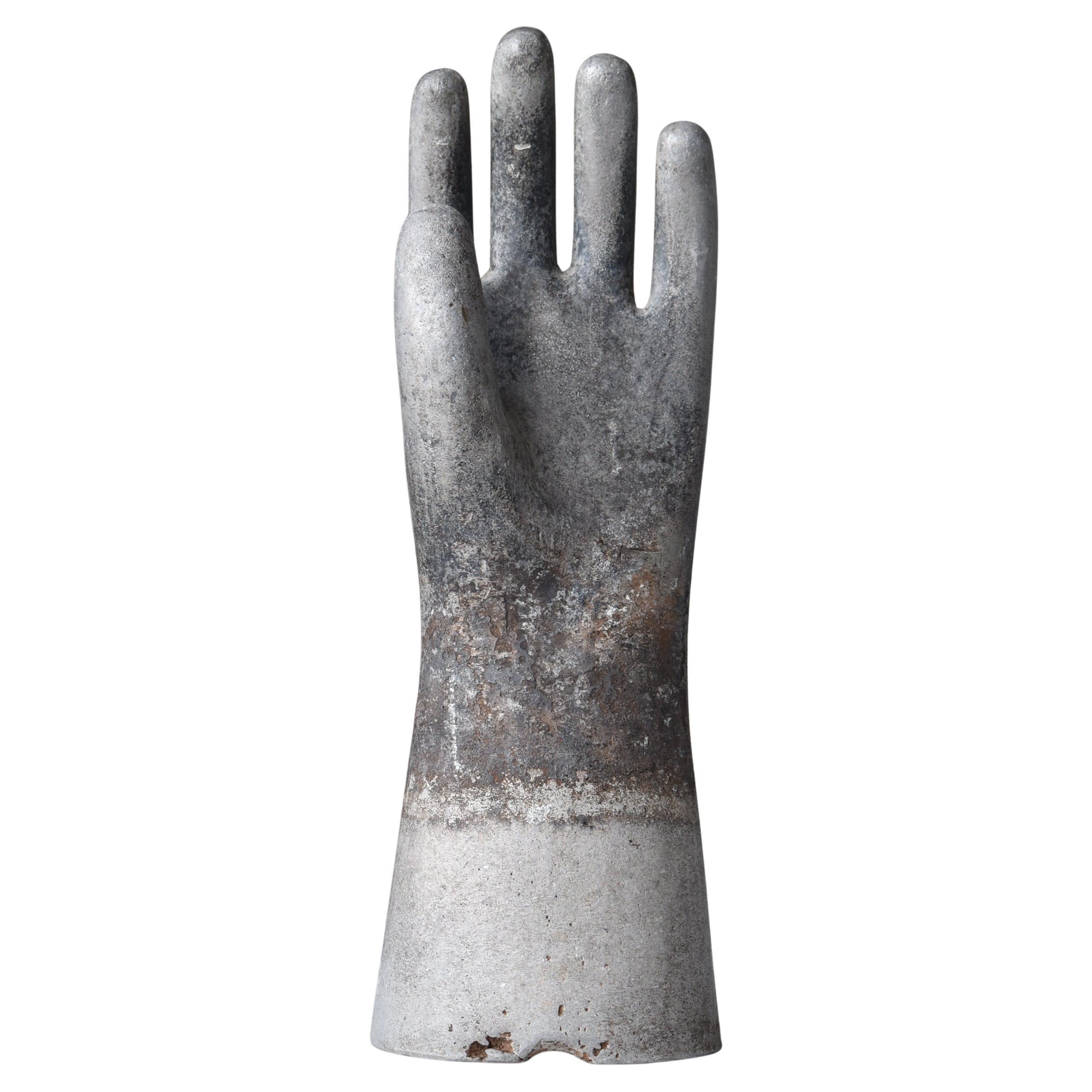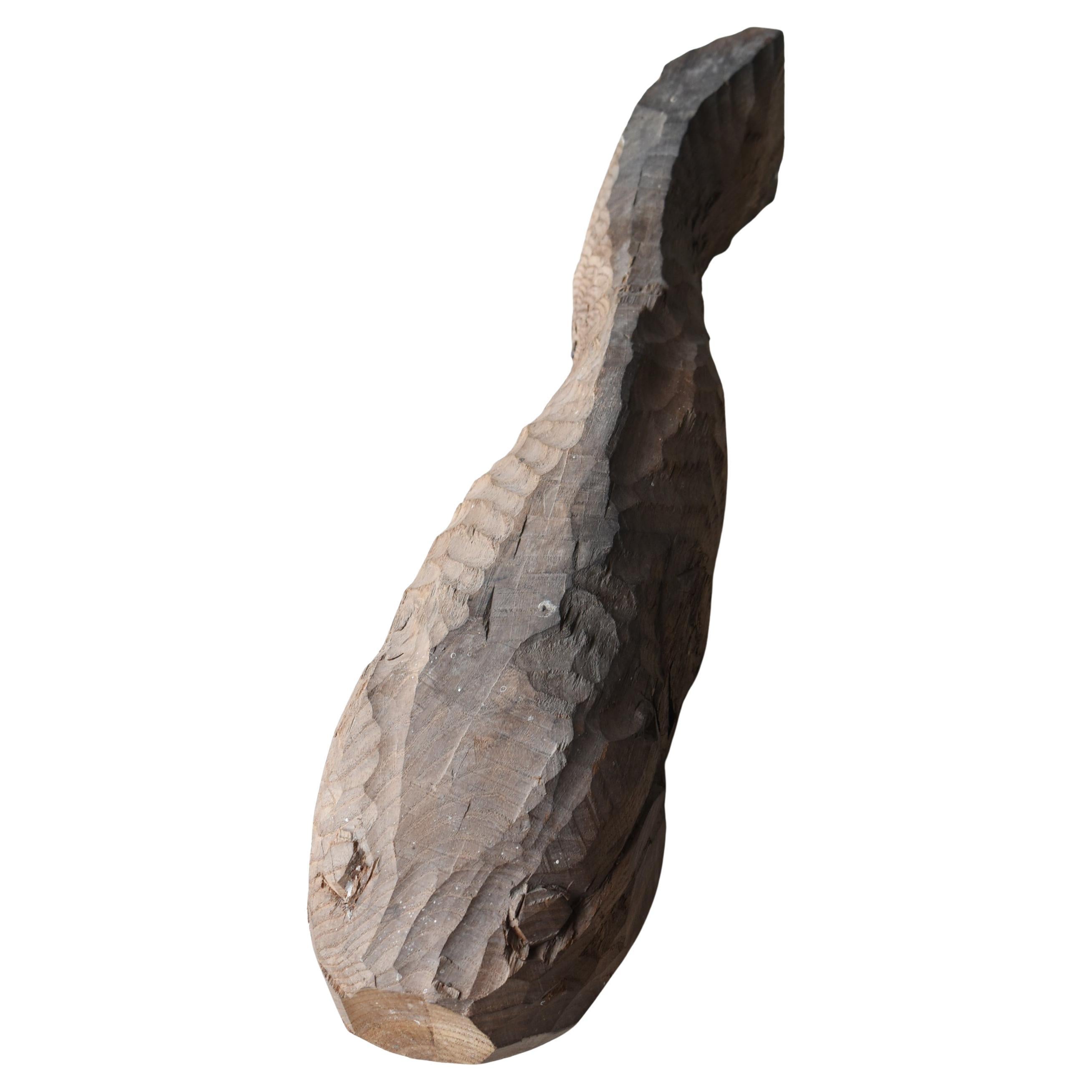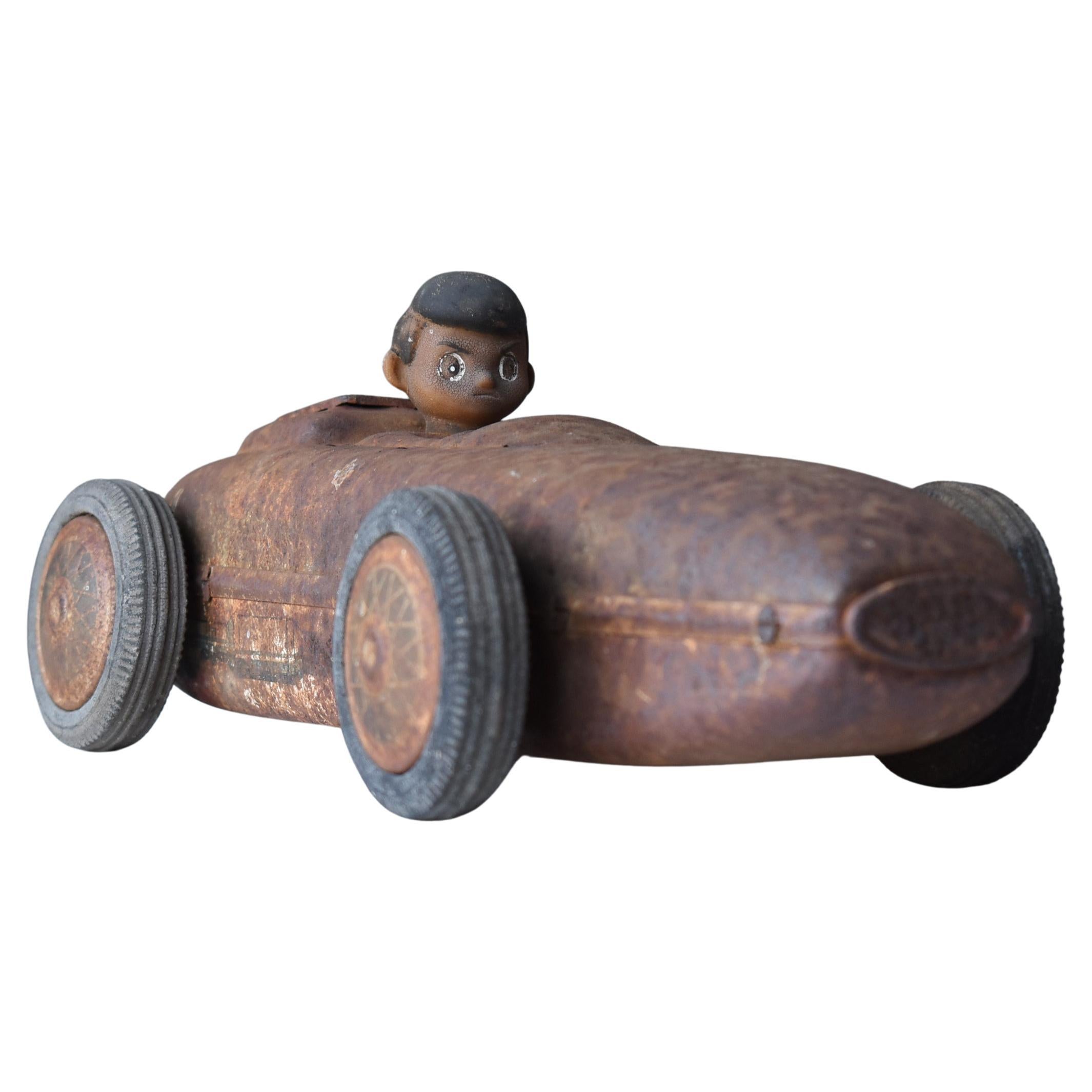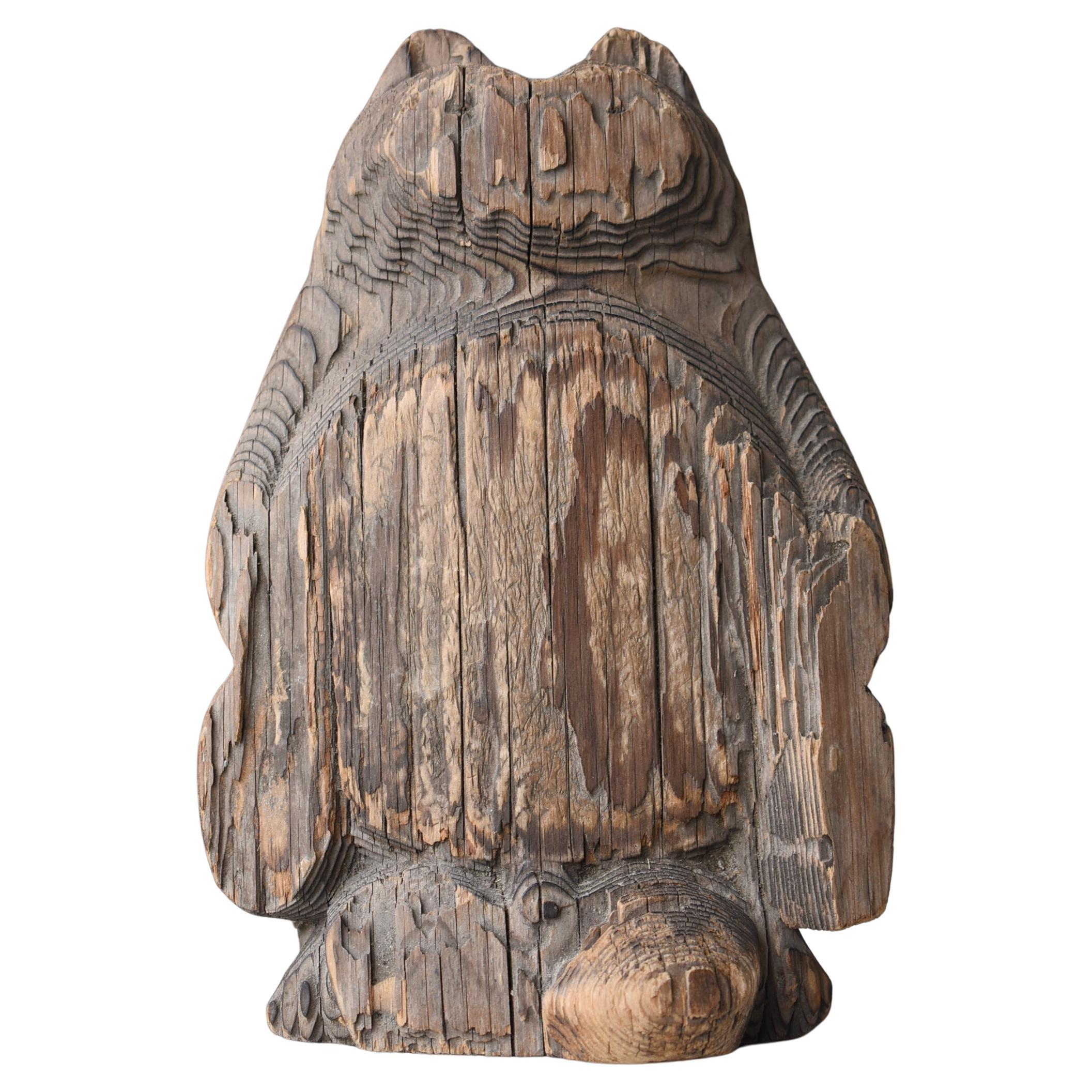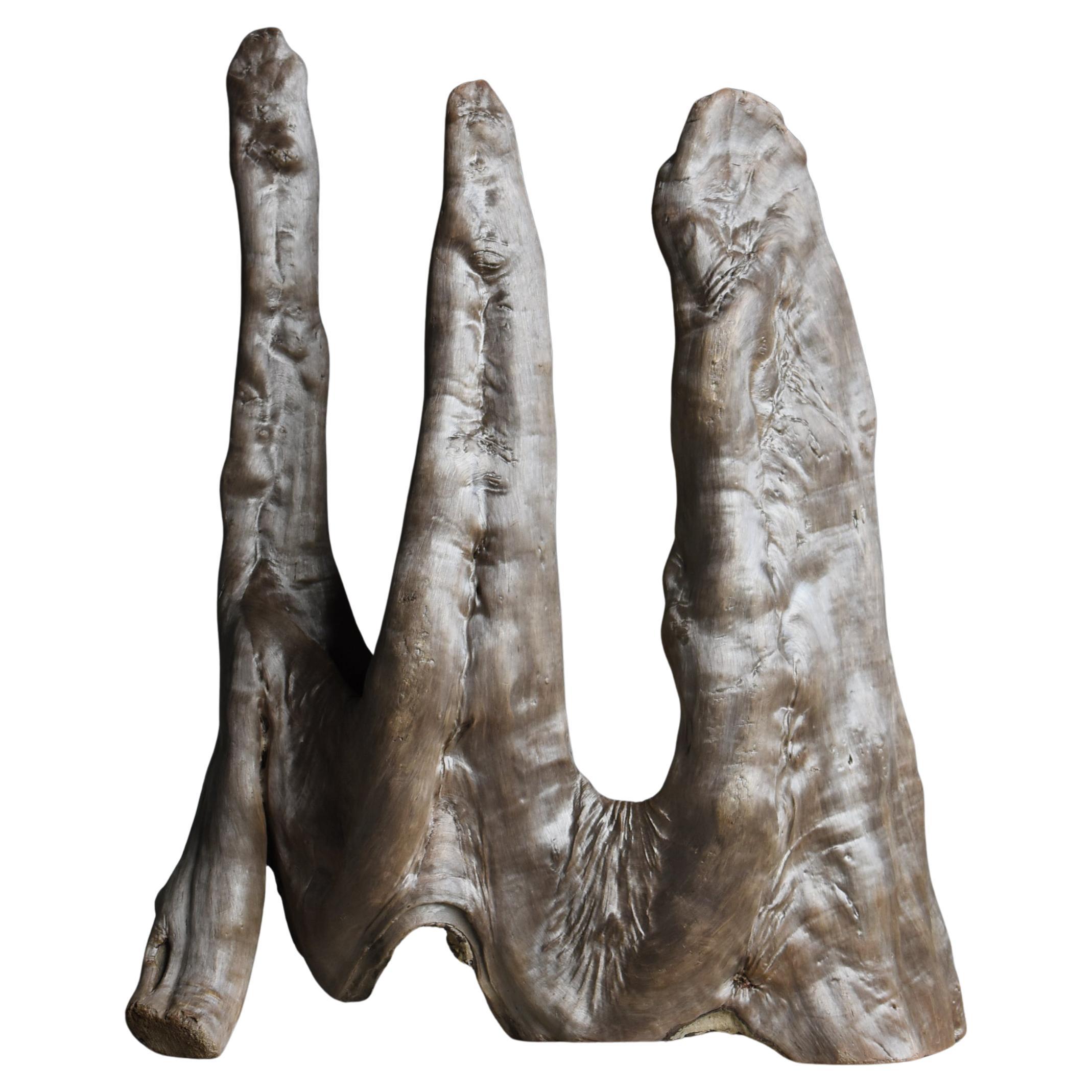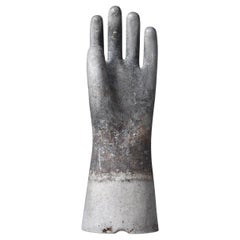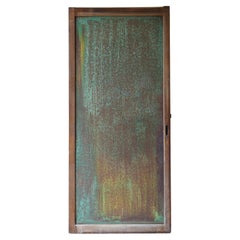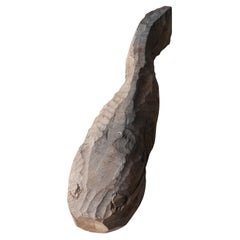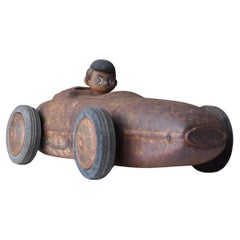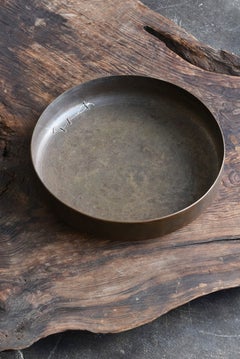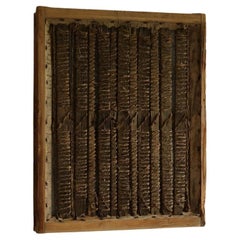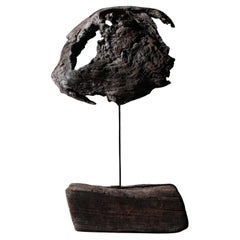Objekte ähnlich wie Japanese Antique Wabi-Sabi Iron Block "Anvil" 1900s-1940s / Figurine Object
Möchten Sie mehr Bilder oder Videos?
Zusätzliche Bilder oder Videos von dem*der Anbieter*in anfordern
1 von 12
Japanese Antique Wabi-Sabi Iron Block "Anvil" 1900s-1940s / Figurine Object
Angaben zum Objekt
This is an old Japanese iron block.
Originally an anvil to be buried underground, it is believed to have been used for a long time in Japan's unique blacksmithing culture.
This iron block is estimated to have been made in the early Showa period (1900s-1940s) before World War II. In the absence of electric tools, it was used in small workshops and rural blacksmith shops to forge hoes, sickles, carpentry tools, or small swords. They were buried in the ground and had a practical structure that allowed the impact of the work to be released to the ground, reducing the burden on the tool and the craftsman.
Installed in earthen floors and outdoor workshops, these blocks were at the center of the blacksmith's daily life, and we can still feel the craftsmen's breath in them today.
The surface is characterized by a rough, rugged, rustic finish that has not been overworked. Rust, a natural result of the long years it has spent in the ground, covers the entire surface, giving it a rich expression that is hard to believe it is iron. It is like an abstract sculpture, and the beauty of the form created by chance resides in it.
Although its original role as a tool has ended, this piece of iron now has a new value as a piece of art that radiates a quiet presence.
The less-than-perfect shape, rust, weight, and quietness. All reflect the spirit of “wabi sabi,” a rare example of Japanese aesthetic sensibility.
Weight: 17.5 kg
_______________________________________
Our Philosophy
Objects always tell the truth.
All I can do is just to face with them sincerely and give
them deep affection as much as I can.
There is no boundary of nationalities and of eras in beauty.
But I think now is the time we choose 'Japanese style' and it
will be the best way to remind us of what we are losing
today and to question us about an essence of beauty again.
I hope that you can touch the memories which the objects here have,
feel and think of something invisible but exists undoubtedly.
- Maße:Höhe: 27 cm (10,63 in)Breite: 12 cm (4,73 in)Tiefe: 8 cm (3,15 in)
- Stil:Showa (Aus dem Zeitalter)
- Materialien und Methoden:Eisen,Metallarbeit
- Herkunftsort:
- Zeitalter:
- Herstellungsjahr:1900s-1940s
- Zustand:Abnutzung dem Alter und der Nutzung entsprechend.
- Anbieterstandort:Chōsei District Nagara, JP
- Referenznummer:1stDibs: LU10403245374662
Anbieterinformationen
Neu bei 1stDibs
In den letzten sechs Monaten beigetreten.
5,0
Gold-Anbieter*in
Premium-Anbieter*innen mit einer Bewertung über 4,3 und 24 Stunden Reaktionszeit
Gründungsjahr 2017
1stDibs-Anbieter*in seit 2025
Typische Antwortzeit: 2 Stunde
- VersandAngebot wird abgerufen …Versand von: Chōsei District Nagara, Japan
- Rückgabebedingungen
Einige Inhalte dieser Seite wurden automatisch übersetzt. Daher kann 1stDibs nicht die Richtigkeit der Übersetzungen garantieren. Englisch ist die Standardsprache dieser Website.
Authentizitätsgarantie
Im unwahrscheinlichen Fall eines Problems mit der Echtheit eines Objekts kontaktieren Sie uns bitte innerhalb von 1 Jahr für eine volle Rückerstattung. DetailsGeld-Zurück-Garantie
Wenn Ihr Objekt nicht der Beschreibung entspricht, beim Transport beschädigt wurde oder nicht ankommt, kontaktieren Sie uns bitte innerhalb von 7 Tagen für eine vollständige Rückerstattung. DetailsStornierung innerhalb von 24 Stunden
Sie können Ihren Kauf jederzeit innerhalb von 24 Stunden stornieren, ohne jegliche Gründe dafür angeben zu müssen.Geprüfte Anbieter*innen
Unsere Anbieter*innen unterliegen strengen Dienstleistungs- und Qualitätsstandards, wodurch wir die Seriosität unserer Angebote gewährleisten können.Preisgarantie
Wenn Sie feststellen, dass ein*e Anbieter*in dasselbe Objekt anderswo zu einem niedrigeren Preis anbietet, werden wir den Preis entsprechend anpassen.Zuverlässige weltweite Lieferung
Unsere erstklassigen Versandunternehmen bieten spezielle Versandoptionen weltweit, einschließlich individueller Lieferung.Mehr von diesem*dieser Anbieter*in
Alle anzeigenJapanische alte Aluminiumhandschuhform 1940er-1960er Jahre / Objekt Wabi Sabi
Dies ist eine alte, in Japan hergestellte Gummihandschuhform.
Sie wurde in der Showa-Periode (1940er-1960er Jahre) hergestellt, und das verwendete MATERIAL ist Aluminium.
Obwohl es s...
Kategorie
Mitte des 20. Jahrhunderts, Japanisch, Showa, Metallarbeit
Materialien
Aluminium
Antike japanische eisenverkleidete japanische Tür 1900er-1940er Jahre / Wabi Sabi
Dies ist eine alte Schiebetür aus Japan.
Diese Leuchte wurde in der frühen Showa-Periode (1900-1940er Jahre) hergestellt und hat ein seltenes Design.
Der Rahmen ist aus massivem Kast...
Kategorie
Mitte des 20. Jahrhunderts, Japanisch, Showa, Türen und Tore
Materialien
Eisen
Japanese Antique Wood Carving Catfish 1900s-1940s / Figurine Object Wabisabi
This is an old carved wooden catfish made in Japan.
It was made in the early Showa period (1900s-1940s) and is made of zelkova wood, which has a profound and beautiful grain. Zelkova...
Kategorie
Mitte des 20. Jahrhunderts, Japanisch, Showa, Skulpturen und Schnitzereien
Materialien
Holz
Japanisches altes, rostfarbenes Spielzeugwagen 1950er-1980er Jahre / Objekt Wabi Sabi
Dies ist ein altes Spielzeugauto, das in Japan hergestellt wurde.
Sie wurde in der späten Showa-Periode hergestellt, und der Korpus ist hauptsächlich aus Weißblech gefertigt.
Die Rei...
Kategorie
Ende des 20. Jahrhunderts, Japanisch, Showa, Metallarbeit
Materialien
Zinn
Antikes japanisches Wandgefäß aus Holz mit Blumengefäß, 1900er-1940er Jahre, Wabi Sabi
Dies ist eine alte wandmontierte Holzvase aus Japan.
Sie wurde in der frühen Showa-Periode (1900-1940er Jahre) hergestellt.
Es sieht aus wie ein skulpturales Werk, das das natürliche...
Kategorie
Mitte des 20. Jahrhunderts, Japanisch, Showa, Antiquitäten
Materialien
Zedernholz
Japanese Antique Huge Low Table 1900s-1940s / Sofa Table Wabi Sabi
This is an old, huge low table made in Japan.
It features an extremely simple yet powerful structure, with an imposing one-piece top plate placed on a round base reminiscent of a stu...
Kategorie
Mitte des 20. Jahrhunderts, Japanisch, Showa, Sofatische
Materialien
Holz
Das könnte Ihnen auch gefallen
Japanisches antikes Kupfer-Alloyr-Tablett / 1800-1900 / Gong / Wabi-Sabi-Kunst
Ich habe ein sehr schönes Kupfertablett gekauft.
Dies ist ein Gegenstand, der früher als Gong verwendet wurde.
Mit anderen Worten: Es wurde als Schlaginstrument verwendet.
Es wurde ...
Kategorie
Antik, 19. Jahrhundert, Japanisch, Edo, Geschirr
Materialien
Kupfer
Japanische antike Tür, Wabi Sabi, abstrakte Kunst, 1860er-1900er Jahre
Sehr alte japanische Schiebetür.
Das schlichte Design vermittelt den Charme des Materials.
Sie können die Welt von Wabi und Sabi spüren.
Empfohlen als Wandgemälde.
Es wurde in der ...
Kategorie
Frühes 20. Jahrhundert, Meiji-Periode, Türen und Tore
Materialien
Holz
Japanisches altes Holzobjekt / Holz-Lump-Figur, Wabi-Sabi
Dies ist ein altes Holzobjekt.
Die Einzelheiten des Baumes sind nicht bekannt, aber es scheint sich um Hartholz zu handeln.
Er verändert im Laufe der Zeit seine Form und Farbe und ...
Kategorie
Frühes 20. Jahrhundert, Japanisch, Primitiv, Antiquitäten
Materialien
Holz, Hartholz
Japanische antike Kommoden 1860-1900 /Tansu, Wabi-Sabi
Diese kleine Schublade wurde in der Taisho-Periode hergestellt.
Diese Truhe ist aus robustem, lackiertem Zedernholz gefertigt, mit einer Bodenplatte aus leichtem Paulownia-Holz und ...
Kategorie
Frühes 20. Jahrhundert, Japanisch, Taisho, Kommoden
Materialien
Holz
Japanische Antiquities Holzschale 1910er-1940er Jahre Primitive Wabi-Sabi
Dies ist eine japanische Holzschale.
Es handelt sich um ein volkstümliches Handwerk, das im täglichen Leben verwendet wurde.
Ich weiß nicht, aus was für einem Holz er besteht, aber e...
Kategorie
Frühes 20. Jahrhundert, Japanisch, Antiquitäten
Materialien
Holz
300 $ Angebotspreis
40 % Rabatt
Japanische Antiquities Holzschale 1910er-1940er Jahre Primitive Wabi-Sabi
Dies ist eine japanische Holzschale.
Es handelt sich um ein volkstümliches Handwerk, das im täglichen Leben verwendet wurde.
Ich weiß nicht, aus was für einem Holz er besteht, aber e...
Kategorie
Frühes 20. Jahrhundert, Japanisch, Antiquitäten
Materialien
Holz
300 $ Angebotspreis
40 % Rabatt
